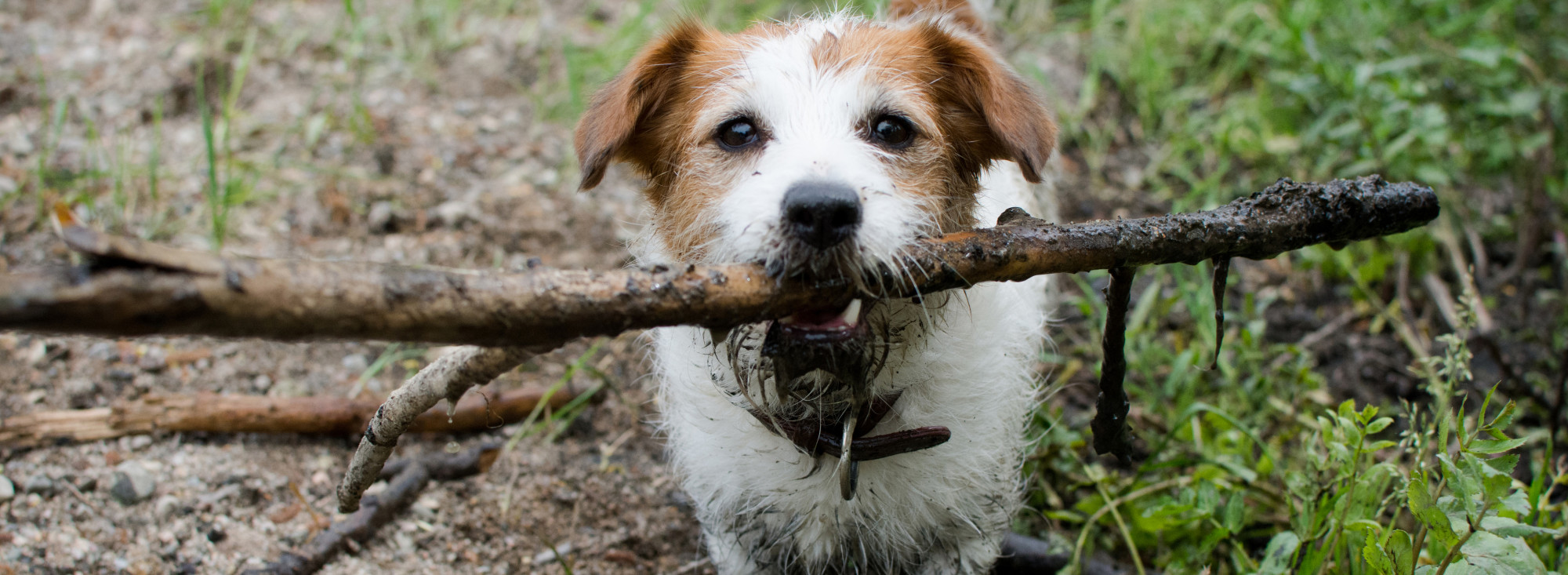
Pet blog and guide
Constant companions
No matter if it’s rainy or sunny, summer or winter: The outdoor season is year-round for pets and their owners. Shared activities like running, hiking or cycling keep both dogs and owners in shape and strengthen the bond between them. But there are some dos and don’ts to remember when taking your four-legged friend on an outdoor sports adventure. This article provides some tips for beginners.
Not all dogs are the same
Chihuahuas, dobermans, English bulldogs, dachshunds: With the variety of sizes and body types among dogs, it’s obvious that not all breeds will excel at endurance sports. The larger the dog, the more easily it can take speed and distance in its stride, although there are some exceptions. Particular caution is warranted, for example, with short-headed breeds! Pugs, French bulldogs and similar breeds are not made for vigorous exercise and can easily suffer breathing difficulties.
Consider, too, that individuals within a breed can differ widely. Their personal preferences, age and constitution determine if they are suitable companions for outdoor sports. Don’t start training your dog until it is at least 18 months old. Ask your vet for advice if you’re uncertain of your pet’s aptitude for sports activities, and make sure before you get going that your dog has no heart problems, metabolic disorders or joint issues.
Getting started...
No matter what the sport, the same rules of thumb apply to both humans and dogs: start slowly and build up gradually. Ideally, fit your dog out with a proper harness to prevent pulling and sudden jerks on the vulnerable neck vertebra. Don’t feed your pooch immediately prior to exercising! A full stomach increases the risk of a life-threatening condition called gastric dilatation volvulus (twisted stomach).
Training partners: Running with your dog
A special running leash you can wear around your waist is recommended basic equipment. Its elastic mid-section protects your lower back against pulling. Give your dog enough time to ‘do his business’ before you start running. Although wolves travel tremendous distances on a hunt, long-distance running is not natural behaviour for a dog. The ideal solution is to incorporate short periods into a run that give your dog some variety: throw a stick, hide a treat under a piece of bark (tree trunk game) or try hide-and-seek with a dog treat pouch. If you are training to break a speed or distance record, it would probably be better to leave your pet at home.
An early-morning climb: Hiking with your dog
Generally speaking, every dog can go hiking if you adapt the route to his level of fitness and size. Start with hikes for families and kids. The difficulty and distance of these treks are easy for beginners to master. Very small dogs can ride in a dog carrier backpack for part of the way. If you are planning a long route, be sure to pack the right equipment: a first-aid kit for paw injuries, appropriate weather protection for your dog on breaks, snacks for you and your pet and, most importantly, enough water. Always remember to practise trail etiquette when hiking with a dog! Don’t allow your unleashed dog to disturb quiet zones for wildlife, conservation areas or grazing animals on high-mountain meadows.
The “Schweizer Wanderwege” (Swiss Hiking Trails) website provides useful tips for hiking with dogs as well as suggested routes.
I want to ride my bicycle: Cycling with your dog
Cycling is a good way to wear out large, boisterous dogs like huskies or dalmatians. But it’s important to ensure the safety of all road users. If at all possible, avoid cycling with your dog on a leash in heavy traffic. Away from busy roads, you can happily let your well-trained dog run unleashed next to your bike. Special bike leashes for dogs are also fairly safe if you want your dog to accompany you on a cycle ride, but the arrangement will require step-by-step practice. Mounted on the frame, the metal arm with short leash prevents your dog from running into your bike. Running on pavement wears down your dog’s claws and puts a heavy strain on the pads, so routinely check the paws. Dog shoes may be the right answer for your ‘training partner’. And always keep in mind: Pavement can get very hot on a sunny day! Don’t risk your pet overheating in direct sun.
Do you want to use your bike as a means of transport or are you planning a long bike tour? Small dogs can be transported in a special basket attached to the handlebars; large dogs can ride in a safe dog trailer.
A bowl full of energy: The right diet
Make sure your pet is getting the right nutrients. Exercise increases metabolic rate, meaning your dog needs to up his calorie intake if he’s out training on a regular basis. Be sure to adapt his food portions accordingly. Supplements can help to achieve a balanced diet. Discuss the best feeding schedule with your vet or a trained dog nutritionist.
Barbara Fox, veterinarien

